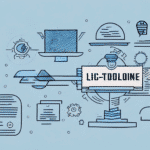Unlocking the Power of Customer Retention Data
As businesses increasingly understand the value of customer retention, customer retention data is becoming more critical than ever. Collecting and analyzing this data can provide valuable insights into your customers' behaviors and preferences, enabling you to tailor your marketing and product development strategies to meet their needs effectively.
The Importance of Customer Retention Data
Gone are the days when businesses could focus solely on acquiring new customers. Today's marketplace is highly competitive, and customer loyalty can be fickle. The ability to retain customers is crucial to the long-term success of any business. It's not only more cost-effective than constantly attracting new customers, but it also leads to higher lifetime customer value and better word-of-mouth marketing.
For instance, according to a Harvard Business Review study, increasing customer retention rates by just 5% can increase profits by 25% to 95%.
Understanding Customer Behavior and Preferences
One of the key ways to improve customer retention is by understanding their behavior and preferences. This is where customer retention data comes in. By analyzing data such as purchase history, feedback, and engagement, businesses can gain insights into what their customers want and need. This allows them to tailor their products, services, and marketing efforts to better meet those needs, ultimately leading to higher customer satisfaction and loyalty.
Identifying At-Risk Customers
Another benefit of customer retention data is the ability to identify at-risk customers. By monitoring customer behavior and engagement, businesses can spot signs of dissatisfaction or disengagement early on and take proactive measures to address the issue. This could include offering personalized incentives or reaching out to the customer directly to address their concerns. By taking action before the customer decides to leave, businesses can improve their chances of retaining them and avoiding the cost of acquiring a new customer.
Benefits of Analyzing Customer Retention Data
Analyzing customer retention data can help you identify patterns and trends in customer behavior, such as which products or services are most popular among your loyal customers, how frequently they purchase from you, and which channels they prefer to use. Armed with this information, you can adjust your marketing strategy to improve customer engagement and loyalty, resulting in higher retention rates and increased revenue.
Additionally, analyzing customer retention data can also help you identify potential issues or areas for improvement in your customer experience. For example, if you notice a high rate of customer churn after a certain point in the customer journey, you can investigate and address any pain points or obstacles that may be causing customers to leave. By proactively addressing these issues, you can improve the overall customer experience and reduce churn, leading to long-term business success.
Strategies for Collecting and Organizing Customer Retention Data
Data Collection Methods
The first step in unlocking the power of customer retention data is collecting and organizing it in a meaningful way. Start by identifying the data you want to collect, which might include:
- Customer profiles
- Purchase history
- Customer feedback
- Social media engagement
Once you've gathered your data, organize it into a central repository, such as a CRM system, that allows you to easily access and analyze it.
Ensuring Data Accuracy and Relevance
It's important to regularly review and update your customer retention data to ensure its accuracy and relevance. This can involve setting up automated processes to collect data, conducting surveys or focus groups to gather feedback, and regularly analyzing your data to identify trends and patterns. By keeping your customer retention data up-to-date, you can make informed decisions about how to improve your customer experience and increase customer loyalty.
Leveraging Customer Retention Data for Business Growth
Improving Marketing Strategies
Perhaps the most significant benefit of customer retention data is its ability to improve your marketing strategy. By understanding which channels and messaging resonate with your customers, you can optimize your marketing efforts to improve engagement and retention. For example, if you notice that your customers are highly engaged on social media, you may want to allocate more resources to that channel and test different types of content to see what resonates best.
Another way to use customer retention data to improve your marketing strategy is by identifying patterns in customer behavior. By analyzing data on customer purchases, browsing history, and interactions with your brand, you can gain insights into what motivates your customers to make a purchase. This information can help you tailor your marketing messages to better meet their needs and preferences, ultimately leading to increased customer loyalty and retention.
Enhancing Product Development
In addition to improving marketing, customer retention data can also be used to inform product development. By analyzing customer feedback and purchase history, you can gain valuable insights into what features and functionality your customers value most and identify areas for improvement. This can help you create products that better meet your customers' needs and improve retention rates.
Furthermore, customer retention data can also help you identify trends and patterns in customer behavior. For example, you may notice that a certain demographic of customers consistently purchases a particular product or service. This information can be used to create targeted marketing campaigns and develop new products that cater specifically to that demographic. By leveraging customer retention data in this way, you can not only improve customer satisfaction and retention but also drive revenue growth for your business.
Developing a Data-Driven Customer Retention Strategy
Mapping the Customer Journey
Creating a successful customer retention strategy requires understanding the customer journey. By mapping out the various touchpoints a customer has with your business, you can identify areas where you can improve the customer experience and increase retention. This might involve:
- Streamlining the checkout process
- Offering personalized product recommendations
- Providing proactive customer support
By using data to inform these decisions, you can create a more effective retention strategy that keeps customers coming back for more.
Personalizing Customer Experiences
Unlocking the power of customer retention data requires more than just collecting and analyzing data. It also requires a strategy for leveraging that data to improve customer retention and drive business growth. This might involve creating personalized customer experiences, improving customer support, or launching targeted retention campaigns based on customer behavior data.
Best Practices for Interpreting and Utilizing Retention Data
Focusing on Valuable Metrics
To effectively interpret and act on your customer retention data, it's important to focus on the metrics that provide the most value to your business, such as:
- Customer lifetime value
- Purchase frequency
- Churn rate
Segmenting Your Customers
Another important factor is to segment your customers based on their behavior and preferences. This allows you to tailor your retention strategies to specific groups of customers, rather than taking a one-size-fits-all approach. Segmentation can be based on:
- Demographics
- Purchase history
- Engagement levels
Regular Data Review and Analysis
It's essential to regularly review and analyze your retention data to identify any changes or trends over time and adjust your strategies accordingly. This ensures that your retention efforts remain effective and aligned with evolving customer needs.
Real-Life Success Stories
Many successful companies have leveraged the power of customer retention data to grow their businesses and improve customer loyalty. For example, Amazon uses purchase history and user data to recommend products to customers based on their past buying behavior. Netflix analyzes viewer data to suggest content that's personalized to each viewer's tastes. By taking a customer-centric approach to their marketing and product development strategies, these companies have been able to achieve high retention rates and sustained growth.
In addition to Amazon and Netflix, other companies have also successfully used customer retention data to improve their businesses. Starbucks, for instance, uses customer data to personalize their rewards program and offer targeted promotions to customers based on their preferences. Sephora uses customer data to create personalized beauty recommendations and offers a loyalty program that rewards customers for their purchases. By utilizing customer retention data, these companies have been able to create a more personalized and engaging experience for their customers, leading to increased loyalty and revenue.
Common Mistakes to Avoid
While customer retention data can be a powerful tool for business growth, it's important to avoid some common mistakes when working with this data:
- Failing to Act on Insights: To truly unlock the power of customer retention data, you need to be willing to make changes to your marketing and product strategies based on what the data tells you.
- Ignoring External Factors: Relying solely on customer retention data without considering other factors that may be impacting customer behavior, such as market changes or competitive pressures.
- Data Accuracy Issues: Ensuring that the data being collected is accurate and comprehensive, as incomplete or inaccurate data can lead to incorrect conclusions and ineffective strategies.
The Future of Customer Retention: Predictive Analytics and Machine Learning
The future of customer retention is likely to be driven by predictive analytics and machine learning. These technologies will help businesses better anticipate customer needs and behavior, enabling them to provide more personalized experiences that improve customer loyalty and retention rates. According to a McKinsey report, businesses that effectively leverage predictive analytics can see a significant increase in customer retention and overall revenue.
As data analytics technology continues to evolve, businesses that embrace these new tools will be best positioned to succeed in the future.
Conclusion
Unlocking the power of customer retention data is essential for businesses aiming to thrive in today’s competitive landscape. By effectively collecting, analyzing, and leveraging this data, companies can enhance their marketing strategies, improve product development, and create personalized customer experiences that drive loyalty and growth. Avoiding common pitfalls and embracing advanced technologies like predictive analytics will ensure that your customer retention efforts are both effective and sustainable.




















